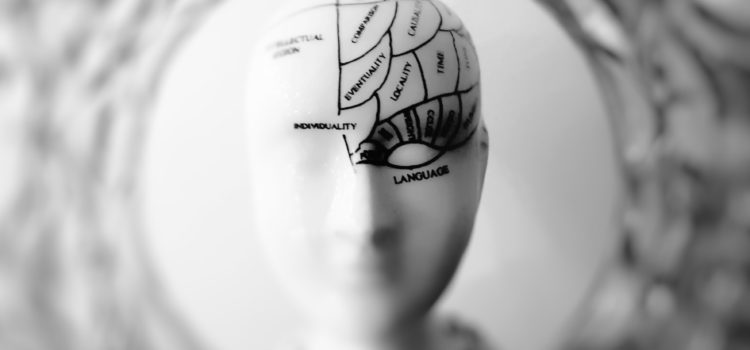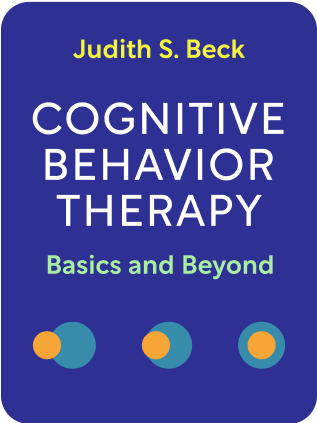

This article is an excerpt from the Shortform book guide to "Cognitive Behavior Therapy: Basics and Beyond" by Judith S. Beck. Shortform has the world's best summaries and analyses of books you should be reading.
Like this article? Sign up for a free trial here .
What is cognitive conceptualization? How can you construct a cognitive conceptualization of a patient?
Cognitive conceptualization provides the framework for better understanding your patient. You’ll ask certain questions to get a feel for what problems the patient might be struggling with. Understanding what cognitive conceptualization is and how it works will help your patient to progress with therapy.
Keep reading for more about cognitive conceptualization.
Understanding Cognitive Conceptualization
In order to fully understand cognitive conceptualization, it’s important to know about the cognitive model.
The cognitive model proposes that dysfunctional thinking is common to all psychological disturbances. In this way, mental illnesses such as depression and anxiety may be considered thinking disorders. The patient has automatic dysfunctional self-talk that influences behavior negatively; the behavior is then interpreted in a negatively biased way, leading to worse thinking. This reinforces itself into a vicious cycle.
- Example: A patient wants to try something new. She thinks, “you’re definitely going to fail, you’re not good at anything.” → Anxious about failing, the patient declines to try the new activity. → She then thinks, “I told you, you can’t get anything right—you’re worthless.”
The negative thinking extends to the core of a patient’s beliefs about herself, the world, and other people, as well as intermediate levels of attitudes, rules, and assumptions the patient holds.
It’s not just the situation itself that makes a person feel a certain way, but also how they construe it, what lens they use to view it.
- Cyclical downfalls can be triggered by precipitating factors, such as a sudden provocation in stress.
- The patient may have had key developmental events earlier in life that predispose her to the condition.
- The patient may have developed coping mechanisms (adaptive and maladaptive) for the dysfunctional beliefs.
The key point of cognitive behavior therapy is that these dysfunctional beliefs can be unlearned.
The patient’s cognitive conceptualization exists on 3 levels: 1) core beliefs, 2) intermediate attitudes, rules and assumptions, and 3) automatic thoughts.
Core Beliefs
These are fundamental understandings regarded as absolute truths—just the way things are. Example: “I’m incompetent.”
They are often not explicitly articulated by the patient consciously.
Early experiences may have developed these—by parents, early authority figures; by a traumatic event; by apparent negative treatment by others (accurate or not).
These generally fall into three categories: “I’m helpless.” “I’m unlovable.” “I’m worthless”
Intermediate Attitudes, Rules, and Assumptions
Attitudes are judgments about a particular outcome or situation. Example: “It’s terrible to fail.”
Rules are prescriptions for behavior for the patient to follow in certain situations. Example: “If a challenge seems too great, don’t even try it.”
Assumptions are predictions about how things will go based on the patient’s behavior. Example: “If I try to do something difficult, I’ll fail. If I avoid doing it, I’ll be OK.”
Generally, the patient’s logic works like this: “If I engage in my [maladaptive coping strategy], then [my core belief] won’t come true and I’ll be OK.” And the inverse of this: “If I don’t engage in my [maladaptive coping strategy], then [my core belief] will come true and I’ll be hurt.”
(Note the patient may also have positive inversions, which arise when the patient’s mood is better. For example, a positive assumption may arise: “If I work hard, I can overcome my shortcomings.”)
Automatic Thoughts
Automatic thoughts arise unconsciously, often in response to a situation and sometimes unprompted. For example, someone who has a core belief that she’s incompetent may be told that her manager wants to meet with her. Her automatic thought may be, “My boss probably thinks I’m doing a terrible job. I’m finally going to be found out and fired.”
Patients are often more aware of the emotion they feel than the thought itself. Automatic thoughts may come in the form of verbal thoughts or images.
A wide variety of situations can evoke automatic thoughts:
- External events
- “A friend didn’t pick up my call.”
- Stream of thoughts
- A patient thinks about an exam and how much is being tested, then continues thinking about how important her grades are and a cavalcade of other thoughts.
- Cognition: a thought, image, memory, or daydream
- A patient thinks of a violent image.
- A patient has a flashback of a traumatic event.
- Emotion
- A patient feels anger, then reflects on that anger. “I shouldn’t be angry at him. I’m such a bad person.”
- Behavior
- A patient binge eats despite promising herself she wouldn’t. “I’m so weak. I can’t even get my eating under control.”
- Physiological
- A patient feels her rapid heartbeat. “Why is my heart racing so fast? There’s something seriously wrong with me.”
- Mental experience
- A patient feels a sense of unreality. “I’m going crazy.”
These automatic thoughts then lead to emotions. The two are distinct.
- Emotions are one word: sad, anxious, angry, jealous, ashamed, hurt, suspicious, disappointed.
- Automatic thoughts are expressed as more than one word.
Constructing a Cognitive Conceptualization
As a clinician, your understanding of the patient’s cognitive conceptualization begins with first contact, and is refined over more sessions and gathering more data with the patient.
Example patient:
- Sally was criticized as a child by her mother. She was often compared unfavorably to her more successful brother. This led to core beliefs about her inadequacy.
- She developed attitudes and rules about always doing the best, being great at everything she tried. In depressed states, she focused on her deficiencies and became afraid of never amounting to anything.
- Her coping strategies include having high standards, overpreparing for tests, looking for weaknesses and addressing them, and not asking for help.
- Sally received new experiences leading to negative thoughts: her classmates had far more AP credits than she did; she didn’t make the school athletic team.
- Sally developed automatic thoughts: “I’m no good. I won’t be able to do this. I’ll probably fail and drop out of college.” She did not question her automatic thoughts.
- These automatic thoughts aggravated into meta-thoughts about her emotions and thought patterns: “What’s wrong with me? Why am I so down? I’m just hopeless.”
- These thoughts led to self-defeating behaviors, like withdrawing from her friends, discontinuing activities that used to give her positive accomplishment, and not concentrating during studying.
Here’s an example of a cognitive model sequence, where a situation prompts automatic thoughts:
- Situation: Sally feels exhausted (physiological trigger) when she wakes.
- Automatic thought: I’m too tired to get up. There’s no use getting out of bed.
- Reaction: Emotionally, she feels sad. Physiologically, she feels heavy. Behaviorally she stays in bed.
- Automatic thoughts: “What if my professor gives a pop quiz? What if this counts against my grade? What if I fail the class?”
- Reaction: Emotionally, she feels anxious. Physiologically, she feels her heart rate rise.
- Situation: Sally notices her rapid heartbeat.
- Automatic thought: “What’s wrong with me? Why am I getting worked up over nothing?
- Reaction: Emotionally, she feels more anxious.
- Automatic thought: “I’d better just stay in bed, I can’t do anything right now.”
- Reaction: Emotionally, she feels relief. Physiologically, she feels her heart rate slow. Behaviorally, she stays in bed longer.

———End of Preview———
Like what you just read? Read the rest of the world's best book summary and analysis of Judith S. Beck's "Cognitive Behavior Therapy: Basics and Beyond" at Shortform .
Here's what you'll find in our full Cognitive Behavior Therapy: Basics and Beyond summary :
- How to use CBT to overcome anxiety, sadness, anger, frustration, and stress
- How to address traumatic events earlier in your life, so that they have less hold on your thinking today
- The key ways to build rapport as a cognitive behavior therapist






